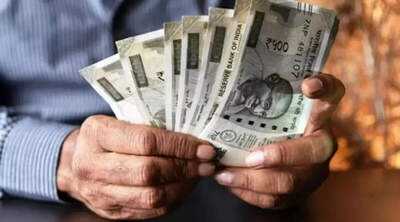CGHS Big Change: The government has made a major change to the Central Government Health Scheme (CGHS), the health scheme for central government employees. Under this, the old package rates have been revised. This move is expected to provide relief to approximately 4.6 million CGHS beneficiaries as well as private hospitals.
What is the new change?
In fact, the government has released new rates for 2,000 medical packages, which will come into effect from October 13th. Previously, CGHS beneficiaries have long complained about not being able to provide cashless treatment from hospitals. This requires them to bear substantial out-of-pocket expenses and wait months for refunds.
Private hospitals say that the current fixed package rates are outdated and insufficient to cover the cost of medical treatment in today's times. With the increase in package rates, patients will no longer have to pay for their treatment themselves and cashless treatment will also be readily available. However, the government states that the new rates will vary depending on the quality of hospitals, the category of cities, the type of hospital, and the patient's ward.
A major step taken since 2014
The last major change in CGHS package rates occurred in 2014. Minor changes were made in the interim, but even after more than 10 years, no comprehensive reforms have been implemented. In August of this year, the Central Government Employees Union (GENC) submitted a memorandum to the government.
It stated that the lack of cashless treatment was causing financial hardship for employees and pensioners, especially in the event of a medical emergency. Following this, the government took this important decision. The CGHS 2000 medical package is not a single package, but rather covers approximately 2,000 types of medical treatments under the Central Government Health Scheme (CGHS). Private hospitals were reluctant to offer cashless payments to patients because the old rates were insufficient for current treatments.
What's changed?
The new rates for the 2000 medical package are based on the city's category (Tier-I, Tier-II, Tier-III) and the hospital's quality, such as NABH accreditation.
Package rates in Tier-II cities will be 19 percent lower than the base rate.
Rates in Tier-III cities will be 20 percent lower than the base rate.
NABH-accredited hospitals will provide services at the base rate.
Non-NABH hospitals will receive a 15 percent lower rate than the base rate.
Super-specialty hospitals with more than 200 beds will receive a 15 percent higher rate.
You may also like

The Woman in Cabin 10 ending explained: Who is the woman?

In shocking move, French President Macron reappoints Sebastien Lecornu as PM

Martin Lewis urges anyone who bought a car from 2007-2024 to act now - 'Owed hundreds'

Dad-of-three killed after jet hose exploded and hit face as company fined £800k

Where is Karnataka government's readiness for GBA elections?: BY Vijayendra







